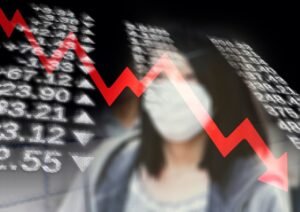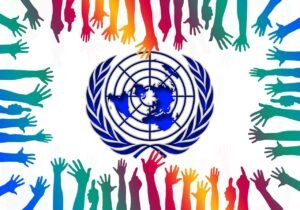The Global Economy: A 2025 Outlook
The global economy in 2023 is characterized by a complex interplay of various factors that influence growth, inflation, and employment trends across nations. After experiencing significant disruptions due to the COVID-19 pandemic, countries worldwide have gradually navigated their recovery paths. As of now, many economies are witnessing positive GDP growth, albeit unevenly distributed. This recovery is supported by government stimulus measures, pent-up consumer demand, and resilient supply chains that have been reconfigured to adapt to new realities.
GDP growth rates vary significantly from region to region. Some emerging markets are showing impressive expansions as they rebound from past lows, driven by strong commodity prices and increased global demand. Conversely, advanced economies are facing challenges such as labor market distortions and supply chain issues, which have tempered growth rates. On the inflation front, a notable rise in prices has become a common phenomenon, influenced by supply chain bottlenecks and increased energy costs. As central banks deliberate on monetary policy adjustments, inflationary pressures continue to pose critical challenges for economic stability.
In terms of employment trends, the job market is gradually improving, with many countries reporting declining unemployment rates. However, labor shortages persist in certain sectors, revealing a mismatch between available jobs and the skills held by the labor force. This scenario underscores the importance of workforce development and training initiatives aimed at bridging the skills gap. As businesses adapt to changing market demands, the evolution of job roles and sectors marks a significant shift in employment dynamics.
Understanding this current economic landscape is essential for framing predictions and expectations for the global economy as we move towards 2025. The interplay of GDP growth, inflation, and employment forms the foundation of the economic outlook, setting the stage for deeper analyses of potential trends and challenges that lie ahead.
Key Economic Trends to Watch
The global economy is witnessing a series of transformative trends that are expected to reshape its structure leading up to 2025. One of the most significant is the rise of digital transformation across various sectors. Businesses are increasingly prioritizing technological advancements, incorporating artificial intelligence (AI) and data analytics to enhance operational efficiency. This digital shift is not merely a response to current market demands, but a long-term strategy to remain competitive in a rapidly evolving landscape.
Another crucial trend is the growing integration of automation and robotics in industries ranging from manufacturing to healthcare. The implementation of automation technologies is set to streamline operations, reduce labor costs, and improve productivity. As organizations adopt these innovations, the workforce will inevitably face displacement, necessitating comprehensive reskilling and retraining programs to equip workers with the skills required for future jobs. This shift highlights the importance of workforce adaptability in a world increasingly dominated by machines.
Moreover, green energy investments are becoming a focal point of economic growth. As countries and corporations commit to sustainability goals, there has been a substantial increase in funding for renewable energy projects. Investments in solar, wind, and other green technologies not only address climate change but also create new job opportunities, fostering economic resilience. The transition to a sustainable energy economy is poised to drive innovation while reinforcing the connection between environmental responsibility and economic performance.
Finally, shifts in consumer behavior are redefining market dynamics. The COVID-19 pandemic has accelerated trends such as online shopping and remote working, leading to a permanent change in how consumers interact with brands. Businesses must adapt to these evolving preferences, focusing on enhancing customer experience through digital channels and personalized offerings. This evolution will continue to influence sectors like retail, technology, and services in the near future.
Geopolitical Factors Affecting the Economy in 2025
The global economy in 2025 will be heavily influenced by various geopolitical factors that shape international relations and trade dynamics. Trade relations among major economies are expected to evolve due to shifting alliances and the changing landscape of multilateral agreements. The United States and China, as the two largest economies, are likely to remain central players in this scenario. Future tariffs imposed by either nation will have widespread implications, affecting not only the countries involved but also their trading partners around the world. The sanctions or trade barriers can distort supply chains and create significant economic ripple effects through various industries.
Tensions among superpowers are expected to remain a crucial aspect of global economic stability. Conflicts in regions such as Eastern Europe, the South China Sea, and the Middle East may instigate a climate of uncertainty, impacting investor confidence and market stability. As countries navigate complex geopolitical landscapes, economic strategies will need to adapt accordingly. Nations may adopt protectionist measures that can lead to reduced trade volumes, which could further exacerbate economic disparities between developed and developing nations.
Moreover, international agreements aimed at promoting cooperation will also shape the economic outlook. Trade pacts, environmental accords, and efforts to combat climate change may yield both opportunities and challenges for global markets. A collective approach to issues like resource distribution and regulatory standards can foster economic collaboration, while divergent policies may lead to fragmentation. This interplay of cooperation versus competition will ultimately dictate how nations position themselves economically in the advancing global marketplace. Understanding these geopolitical dynamics will be essential for policy-makers, businesses, and investors looking to navigate the intricacies of the future economy.
Impact of Climate Change on Economic Growth
The accelerating effects of climate change present significant challenges and opportunities for the global economy as we look towards 2025. Environmental regulations and sustainability initiatives are increasingly influencing economic policies worldwide, compelling businesses and governments to adapt. Policymakers are recognizing the financial implications of climate action, as they endeavor to implement frameworks that not only seek to mitigate climate risks but also promote economic resilience.
Various industries are already experiencing the ramifications of climate change policies. For instance, the renewable energy sector is witnessing substantial investment, underpinning growth and innovation. Governments are incentivizing the shift from fossil fuels to cleaner energy sources, which has created a robust market for solar, wind, and other renewable technologies. As these initiatives gain momentum, industries reliant on traditional energy sources may confront increased operational costs and regulatory burdens, potentially stifling their growth.
The impacts of climate change extend beyond regulatory landscapes; natural disasters are becoming more frequent and severe, with consequential effects on economic stability. Businesses that are unprepared may face disruptions in supply chains, labor markets, and infrastructure, which can result in reduced productivity and heightened financial losses. Additionally, sectors such as agriculture and tourism are particularly vulnerable to changing climate patterns, which could lead to decreased output and diminished consumer interest.
Global economic growth trajectories will be heavily influenced by how effectively industries adapt to climate challenges. As nations collectively move towards achieving sustainability goals, the ability to innovate and implement green technologies will be crucial. The effectiveness of these environmental initiatives will ultimately shape individual economies, marking a pivotal moment as we approach 2025. Failure to address the repercussions of climate change may yield daunting financial costs, emphasizing the urgency of a unified response to this pressing issue.
Technological Advancements: Opportunities and Threats
The landscape of the global economy in 2025 will be significantly shaped by rapid technological advancements. Emerging technologies such as artificial intelligence (AI), blockchain, and big data analytics are poised to redefine traditional business models and drive economic growth. These innovations offer remarkable opportunities for increased productivity, enhanced efficiency, and the fostering of a new wave of innovation across various sectors.
For instance, artificial intelligence is anticipated to revolutionize industries by automating routine tasks, thus enabling organizations to focus their human resources on more strategic endeavors. This transition can lead to higher productivity levels, as AI systems can analyze vast datasets more rapidly and accurately than human counterparts. Consequently, businesses may experience streamlined operations and an ability to make data-driven decisions, thereby enhancing their competitiveness in the global market.
Moreover, blockchain technology represents another significant advancement that holds the potential to improve transparency and security within transactions. Its decentralized nature may reduce fraud and increase trust among consumers. Industries such as finance, supply chain management, and healthcare are already exploring blockchain to enhance their operational frameworks and gain a competitive edge. Big data analytics further complements these advancements, providing deep insights into consumer behavior and market trends that can guide strategic planning and innovation.
However, the integration of these technologies is not without risks. One of the most pressing concerns is job displacement, as AI and automation may render certain roles obsolete, leading to workforce disruptions. Additionally, the increasing reliance on digital systems raises serious cybersecurity concerns, as vulnerabilities in technology could result in data breaches and loss of sensitive information. Therefore, while emerging technologies present numerous opportunities for economic growth, it is imperative to address the accompanying challenges to ensure a balanced and sustainable technological evolution.
Consumer Confidence and Spending Patterns
As we project into 2025, consumer confidence is pivotal in shaping spending patterns around the globe. In recent years, a noticeable recovery trend has emerged, primarily due to the easing of pandemic-related restrictions. This progressive restoration of income levels and job security indicates a positive trajectory in consumer sentiment. Strong consumer confidence typically correlates with increased expenditure, which is vital for economic growth. Consequently, understanding factors influencing consumer perceptions becomes essential for businesses and policymakers.
Demographic shifts are anticipated to play a crucial role in consumer behavior. Generation Z and Millennials, now the dominant consumer cohorts, demonstrate a marked inclination towards sustainability and ethical consumption. Their preferences are shifting traditional spending patterns, as they seek products that align with their values. This generational focus on sustainable products underscores a significant change in how companies cater to consumer demands. Brands that embrace transparency and responsibility in sourcing materials are expected to gain a significant competitive edge in the marketplace.
Informational technology enhancements and digital commerce continue to shape consumer confidence and spending patterns. As e-commerce flourishes, convenience has become a primary driver for purchasing decisions. More consumers are opting for online shopping, leading to a structural shift in brick-and-mortar retail models. Additionally, improved online platforms offer personalized shopping experiences, which further bolster consumer engagement and potentially enhance spending levels.
In light of these developments, businesses must remain agile to adapt to the evolving landscape of consumer expectations. By aligning their strategies with the values of these emerging demographics and leveraging technology effectively, companies stand to benefit from the resurgence in consumer confidence leading up to 2025.
Central Bank Policies and Global Interest Rates
The economic landscape heading into 2025 is expected to be heavily shaped by the monetary policies enacted by central banks around the world. As economies continue to recover from the impacts of the COVID-19 pandemic, central banks will play a pivotal role in managing interest rates and inflation. In response to various economic indicators, many central banks have signaled potential adjustments to their monetary policies, which are likely to influence global economic stability and growth.
Central banks, such as the Federal Reserve in the United States and the European Central Bank, are essential in setting interest rates. As inflationary pressures arise due to supply chain disruptions and rising demand, these institutions are likely to adopt more stringent measures to contain inflation. Anticipated actions may include raising interest rates to curb spending and investment, which in turn could slow economic growth but stabilize prices. The balance that central banks must strike is complex; pushing rates too high could stifle growth, while keeping them too low could exacerbate inflation.
Moreover, central banks in emerging markets will also face unique challenges in 2025. Many of these countries are dealing with higher debt levels and more variable currencies, making their monetary policy decisions crucial for maintaining economic stability. Coordination between central banks globally will be necessary, as actions taken in one region can have ripple effects worldwide. For instance, changes in the U.S. Federal Reserve’s policies can influence capital flows to developing economies, impacting their interest rates and economic conditions.
Ultimately, the actions taken by central banks will significantly influence global interest rates and, by extension, the overarching economic growth trajectory. This interplay of policies will be a key area to monitor as we approach 2025, as it will determine not only growth rates but also the broader economic landscape globally.
Global Trade and Supply Chain Dynamics
The landscape of global trade and supply chain dynamics is undergoing significant transformation as the world emerges from the disruptions caused by the COVID-19 pandemic. Businesses are increasingly recognizing the necessity to reevaluate and revitalize their trade strategies to adapt to the new economic realities. One of the most pressing challenges has been labor shortages, which have been exacerbated by pandemic-related factors such as health restrictions and changes in workforce availability. This deficiency has created bottlenecks in production and logistics, complicating efforts to maintain efficiency in supply chains.
Resource allocation has also become a pivotal issue. Companies are finding it increasingly difficult to manage their resources effectively, leading to delays and increased costs. As firms grapple with these challenges, there is a growing trend toward localization of supply chains. This strategic shift is driven by the desire for greater resilience and reduced reliance on distant international suppliers. Businesses are considering the balance between localization and globalization in their supply chain strategies, recognizing that both approaches have merits and drawbacks depending on their particular circumstances.
The quest for balance is also echoed in the adoption of technology to enhance supply chain visibility and efficiency. Investment in digital platforms and advanced analytics is becoming a common practice among businesses aiming to streamline operations and improve decision-making processes. These technologies facilitate real-time tracking of goods, better anticipation of market demands, and more effective management of resources. The integration of sustainable practices within supply chains is another crucial factor, as companies are under increasing pressure to adhere to environmental standards while maintaining profitability.
As companies continue to adapt to the evolving landscape of global trade and supply chain management, it is clear that a multifaceted approach will be necessary. Businesses must remain agile, leveraging innovative solutions to overcome challenges and capitalize on opportunities in an interconnected global economy.
Anticipating the Future of the Global Economy
As we look ahead to 2025, it is crucial to recognize the intricate dynamics that shape the global economy. Throughout this exploration, we have examined fundamental themes such as technological advancement, geopolitical shifts, and environmental considerations, all of which substantially impact economic forecasts. The interplay between these elements creates a landscape that is both exciting and unpredictable. Businesses must navigate these changing conditions with agility and foresight, ensuring they remain competitive in an evolving market.
The unpredictability of global economic indicators underscores the complexity of forecasting. Factors such as inflation rates, international trade agreements, and emerging market trends are challenging to quantify and predict accurately. The ongoing effects of global events—such as pandemics, climate change, and political unrest—further contribute to this uncertainty. Therefore, policymakers and business leaders should prioritize comprehensive risk assessments and scenario planning to effectively prepare for various future outcomes.
Moreover, adaptability becomes vital for success in this landscape. Organizations that foster a culture of flexibility and innovation will likely thrive despite the challenges posed by economic fluctuations. By investing in technology and workforce development, businesses can enhance their capabilities to respond to market changes more effectively. Collaborating across borders and sectors will also be essential, allowing for shared insights and strategies that promote resilience in the face of adversity.
In summary, while the journey towards 2025 may be rife with challenges, it also presents opportunities for those willing to adapt and innovate. The future of the global economy will be defined by the decisions made today, emphasizing the need for preparedness and a proactive approach. By embracing change and leveraging emerging trends, businesses can not only survive but potentially flourish in an uncertain global market.




